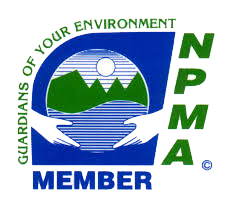Wood is a common material used in homes for its beauty and durability. However, it can also attract unwelcome guests that can cause serious damage. First thing to remember, these wood-destroying pests can compromise the structural integrity of your home, leading to costly repairs. From termites to carpenter ants, understanding the signs of an infestation is crucial. In this blog post, we’ll help you identify the most common wood-destroying pests and provide tips on how to protect your home from them. By taking preventive measures and seeking professional help when needed, you can safeguard your property from these destructive invaders.
Undoubtedly, termites are perhaps the most infamous wood-destroying pests. These tiny insects live in colonies and can cause significant damage over time. There are several types of termites, but the most common in homes are subterranean termites. These pests are particularly insidious because they often remain hidden until significant damage has already occurred. In fact, their ability to chew through wood, flooring, and even wallpaper undetected makes them a homeowner’s nightmare. Understanding their behavior and identifying early signs of infestation is crucial in preventing extensive damage.
Regular Inspections: Schedule regular termite inspections with a pest control professional.
In addition, carpenter ants are another common wood-destroying pest. Unlike termites, carpenter ants do not eat wood. Instead, they excavate it to build their nests, which can weaken the structure of your home. These ants are particularly attracted to moist, decaying wood, making areas with water damage or poor ventilation especially vulnerable. Carpenter ants can create extensive networks of tunnels within the wood. As a result, compromising its integrity and leading to costly repairs. Early detection and addressing moisture issues can help prevent infestations and protect your home’s structural stability.
Professional Treatment: If you suspect a carpenter ant infestation, contact a pest control professional for targeted treatment.
Powder post beetles are small wood-destroying insects that lay their eggs in cracks of unfinished wood. The larvae then bore into the wood, turning it into a fine powder as they feed. These pests are particularly problematic because they can infest hardwoods commonly used in furniture, flooring, and structural beams. Generally, over time, the damage caused by powder post beetles can severely weaken wooden structures, leading to costly repairs and replacements. For this reason, identifying and addressing infestations early is crucial to prevent widespread damage and preserve the integrity of your wooden items and structures.
Professional Extermination: A pest control professional can treat infested wood with appropriate insecticides.
Similarly, wood borers are a group of wood-destroying beetles whose larvae tunnel through wood, causing structural damage. This category includes old house borers, longhorn beetles, and bark beetles. These pests are particularly damaging because their larvae can go unnoticed for long periods, quietly weakening wooden structures from the inside. Wood borers are often attracted to softwood and can infest both newly constructed and older homes. Early detection and treatment are essential to prevent extensive damage and ensure the safety and stability of your home’s wooden components.
Pest Control Services: A pest control expert can assess the extent of the infestation and provide suitable treatment.
Carpenter bees resemble bumblebees but can cause significant damage to wooden structures. They bore into wood to create nests, which can weaken the affected areas over time. These bees prefer untreated or weathered wood and can be particularly damaging to exterior structures such as decks, eaves, and siding. As a result, the tunnels they create can lead to structural weakening and, over time, attract other pests or moisture, further exacerbating the damage. Hence, identifying carpenter bee activity early and taking preventive measures can help protect your wooden structures from significant harm.
Professional Help: For severe infestations, contact a pest control professional for safe removal.
In the long run, identifying and dealing with wood-destroying pests early can save you time, money, and stress. By knowing the signs of infestation and taking preventative measures, you can protect your home from these destructive invaders. If you suspect an infestation, it’s always best to consult with a pest control professional to ensure effective treatment and long-term protection. Keep your home safe and sound by staying vigilant against these common wood-destroying pests.
To conclude, protect your home from these destructive pests by staying informed and taking action at the first sign of trouble. In other words, regular inspections and maintenance can go a long way in preserving the integrity of your home’s wood structures. Don’t let these pests destroy your investment—take control and keep your home pest-free.







We are here to take your
call 24 hours a day
6271 W Howard Street
Niles, IL 60714
(847) 610-8323
Illinois License 051-024800
Copyright 2024, Eco Tech Inc. All rights reserved.